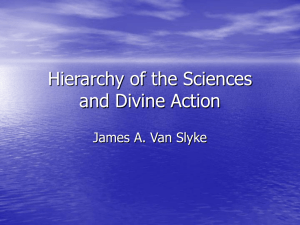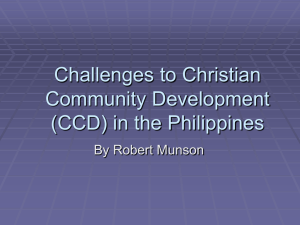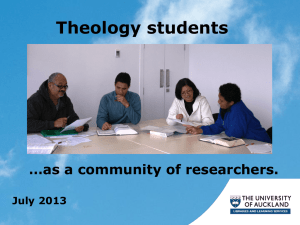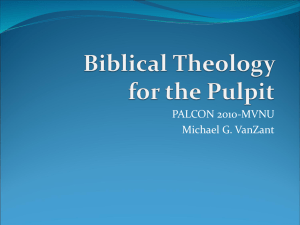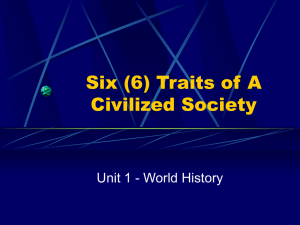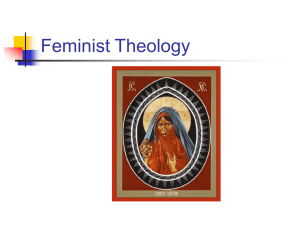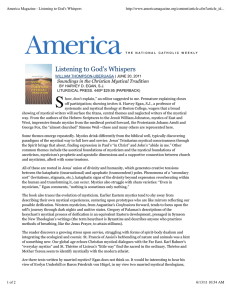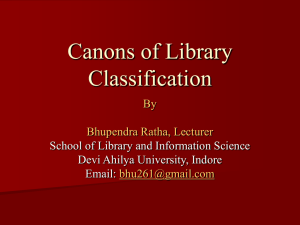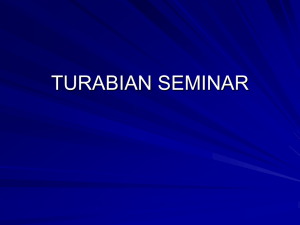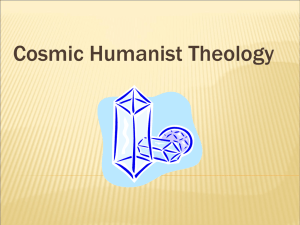PowerPoint
advertisement
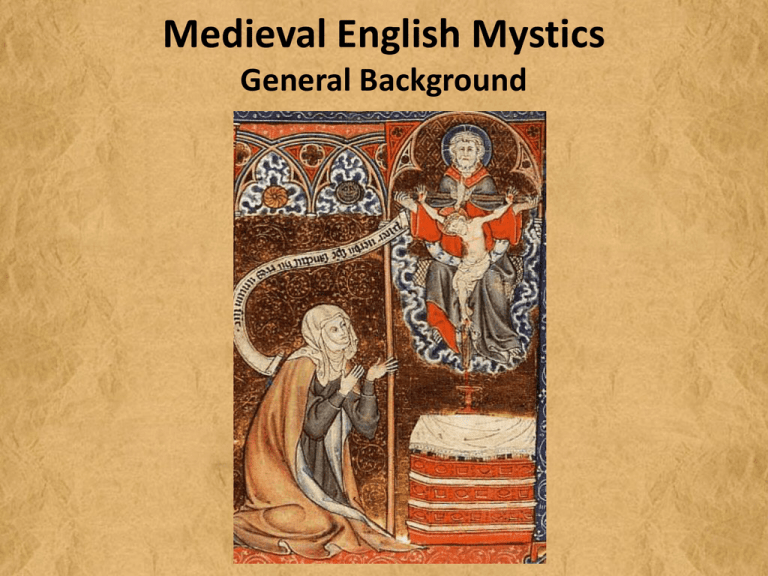
Medieval English Mystics General Background Middle Ages (400-1500) • Early Middle Ages: 400-1100 • Late Middle Ages: 1100-1500 • Anglo-Saxon England: ca. 450-1066 (Norman Conquest) The Medieval English Church • Pope/papal legate • Archbishops (Metropolitan Bishops): Canterbury, York (N. England) • Diocesan Bishops (diocese/see) ~ 20 • Parish priests • Secular clergy: priests living in the world, not under a rule; no vows, can possess property, under authority of a bishop • Regular clergy: clergy living under a rule; either monastic or regular canons Monasticism • Monks/nuns: members of a religious community living under vows of poverty, chastity and obedience • Some monks were priests; recited Divine Office daily • Some were not priests (lay brothers) • Monastic orders: Benedictine (reformed into Cistercian, Trappist); Carthusian Friars Members of a mendicant (begging) order, under a rule but heavily involved in community Dominicans (1216: “Black Friars”) Franciscans (1209: “Grey Friars”) Carmelites (1155: “White Friars”) Augustinians (1244: “Austin Friars”) Canons Secular Canons: community belonging to a cathedral (bishop) or collegiate church (no bishop) Regular Canons: lived together under a semi-monastic rule, shared property Terminology (see Nicholas Watson, “The Middle English Mystics” and Denise N. Baker, “Mystical and Devotional Literature”) • Mystical: ME mystike “figurative; secret” – 14th/15th c.: symbolic/figurative meaning of the Bible • “mystick theology” 1639; “mystic”/”mysticism” 18th century • Contemplative: spiritual practices of professed religious (via activa/via contemplativa) • Heightened consciousness of God: union, presence, ecstasy, deification • Devotional: “an object or practice that stirs a religious emotion of awe, reverence, or piety” (Baker 423) – between liturgical and contemplative; individuals or groups: defined by objects, not forms; pilgrimages, relics, art, literature • Visionary: dreams, otherworlds, prophecies, punishments (many genres) • Feminism / cultural studies / literary studies Two Types of Mystical Theology • Affirmative (cataphatic) theology: connects God's unity to the world; can understand God through sensible things, use imagery • Negative (apophatic) theology: knowing by not knowing • God is transcendent, infinite: darkens our reasoning powers, but this leads to loving union • Paradox: closer you come to union with God, the more blinding God becomes to human reasoning • nature of God becomes more immediately present. • Awe and wonder temper human intellect Major Figures in Mystical Theology • (Pseudo-)Dionysius the Areopagite (ca. 500 CE) • Influenced by Neoplatonism • Mystical Theology: negates all language about God; radical transcendence of divinity cannot be known • mystical union comes from unknowing (agnōsia) • Negative theology: God can’t be named adequately even in negative terms - God is prior to all affirmation and negation • divine nature is beyond all knowledge and speech • union with God can only occur in the cloud and darkness of unknowing • Ecstasy: go out from intellect to its hidden source in the divine nature itself • return to the God "beyond being" • Anselm, Archbishop of Canterbury 1093-1109 • Orationes sive Meditationes: “affective spirituality” (outside liturgy) • Ascetic, intellectual; but added to by others • Became more emotional: Passion meditations • Suffering human Jesus: passion -> compassion • “affective piety” Bernard of Clairvaux (d. 1153) • Sermones super Canticum Canticorum: erotic mysticism • Union with God is possible in this life • Humbling of Christ • Book of experience/book of the Bible • Imitatio Christi Victorine Spirituality • Abbey of St Victor, Paris • Fl. 12th c. - regular canons (rule of St Augustine) Hugh of St Victor (d. 1141) • Attempt to order stages of asceticism/prayer/m ysticism • Made Dionysius mainstream Victorine Spirituality (II) • Hugh’s Noah’s ark treatises: mandala (right) represents cosmos, salvation history, mystic's inward journey to divine union • Richard of St Victor (d. 1173): applied psychological method to mystical experience, integrated intellect into contemplation, influenced Bonaventure, Cloud of Unknowing
